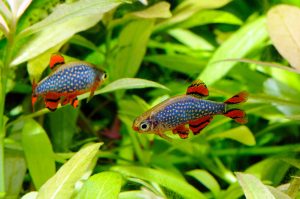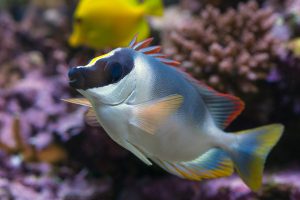From the lighting to the filter, your fish tank relies on various pieces of technology in order to keep your fish safe. If the power goes out, it can disturb your fish as much as the humans and other pets in your household. Being prepared by knowing what fish tank owners should do during a power outage can help protect your livestock from uncomfortable or even dangerous conditions.
How Fish Tank Owners can Protect Livestock During a Power Outage
If the power outage only lasts for a few minutes, there’s no need for concern. If the outage lasts for more than three hours, you may want to consider taking action to protect your livestock. Without power, oxygen in the tank will become depleted, the temperature will drop or rise, and ammonia will build up.
Following are a few ways fish tank owners can protect livestock before and during a power outage.
1. Invest in a backup generator.
Purchase an uninterruptible power system that you can use during the outage. You can buy one at the pet store, a general hardware store, or through power company suppliers.
2. Buy a battery-operated air pump.
If the outage is expected to last less than three hours, a battery-operated air pump may do the trick. Make sure you have spare batteries available at all times.
3. Have extra RODI water on hand.
If the filters are not working, it means the water will get dirtier. If you have our RODI water delivered to your home, make sure you order an extra jug to have on hand. You can use the backup for an extra water change if needed or to create a temporary fish tank if the main fish tank is unusable or unsafe.
4. Include natural filters and bottom feeders in the tank at all times.
If the manmade filter goes out during a power outage, the rocks, gravel, plants, and bottom feeders will help keep the fish tank safer for a little longer. It’s not a permanent solution for a long-term power outage, but it can help temporarily.
5. Maintain the appropriate temperature of the water.
 When you live in Arizona and the power goes out, the water may become too warm for the fish to handle. Float a bag of ice cubes on the top of the water occasionally to bring the temperature down if necessary. Be careful not to shock the fish with the ice, and use a temperature gauge to avoid bringing the temperature of the water down too much.
When you live in Arizona and the power goes out, the water may become too warm for the fish to handle. Float a bag of ice cubes on the top of the water occasionally to bring the temperature down if necessary. Be careful not to shock the fish with the ice, and use a temperature gauge to avoid bringing the temperature of the water down too much.
Remember that in addition to the filters, the lights and heaters are likely out as well, so the water may become too cool. If it does, you can wrap a blanket around the outside of the tank. Don’t cover the top.
6. You don’t have to feed them as much as usual.
You don’t want to starve your fish, but you can reduce how much you feed them during the power outage. The less they eat, the less waste they’ll produce, which can help minimize the increase of ammonia levels in the water.
Emergency Services
Seatech Aquariums offers 24/7 emergency services for its customers. If you have a power outage and are concerned about the welfare of your livestock, contact us. We can answer your questions and assist you as needed.




